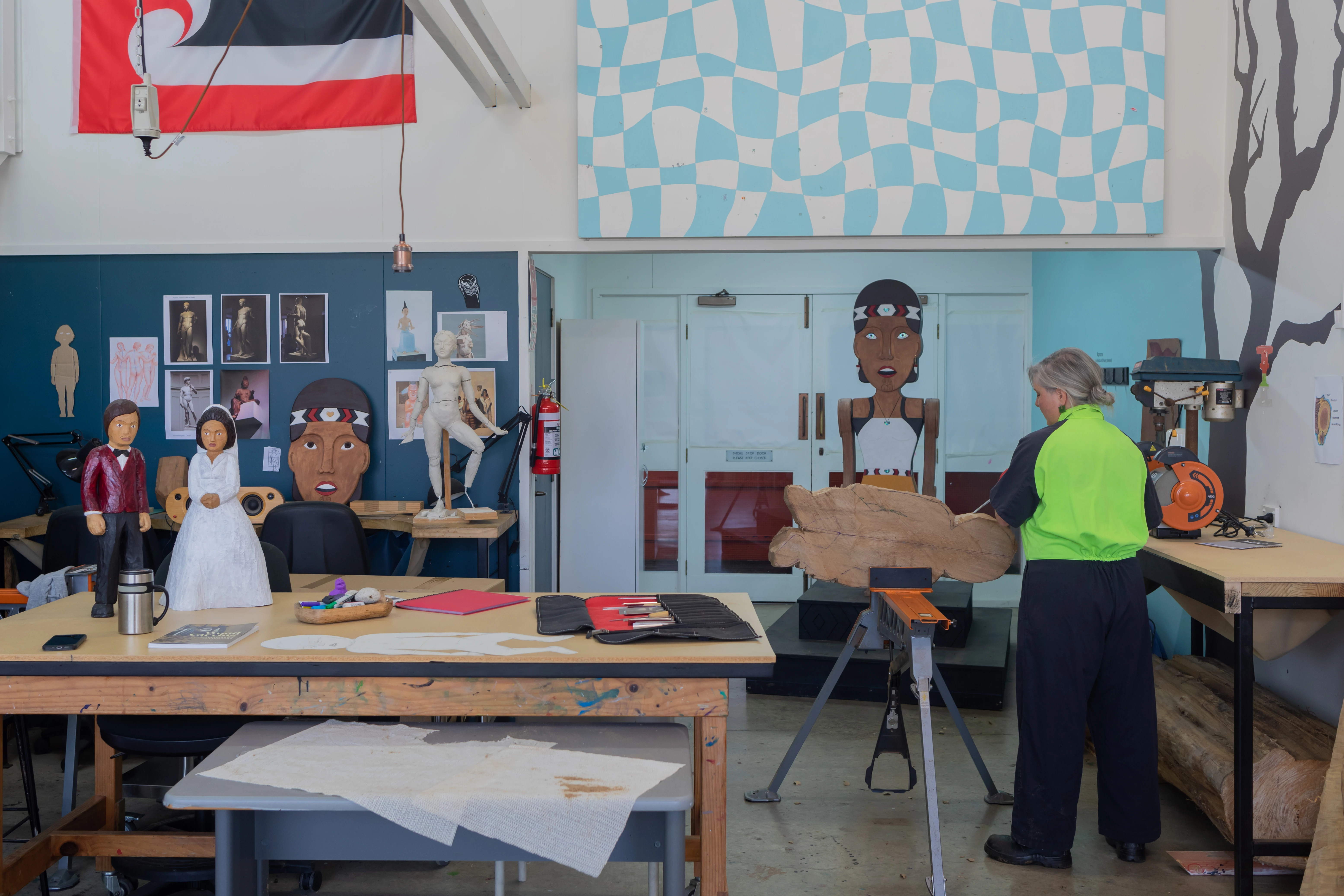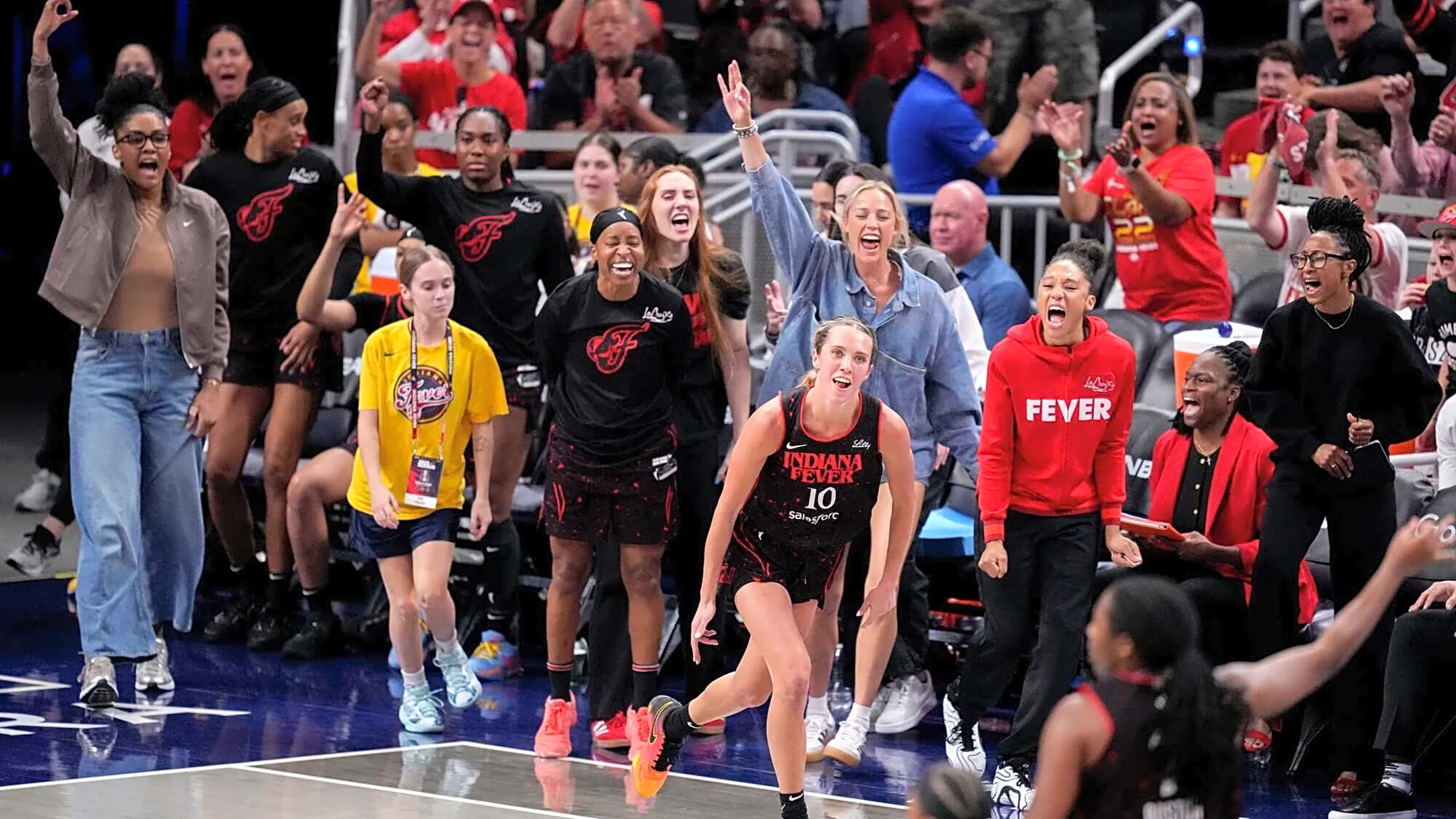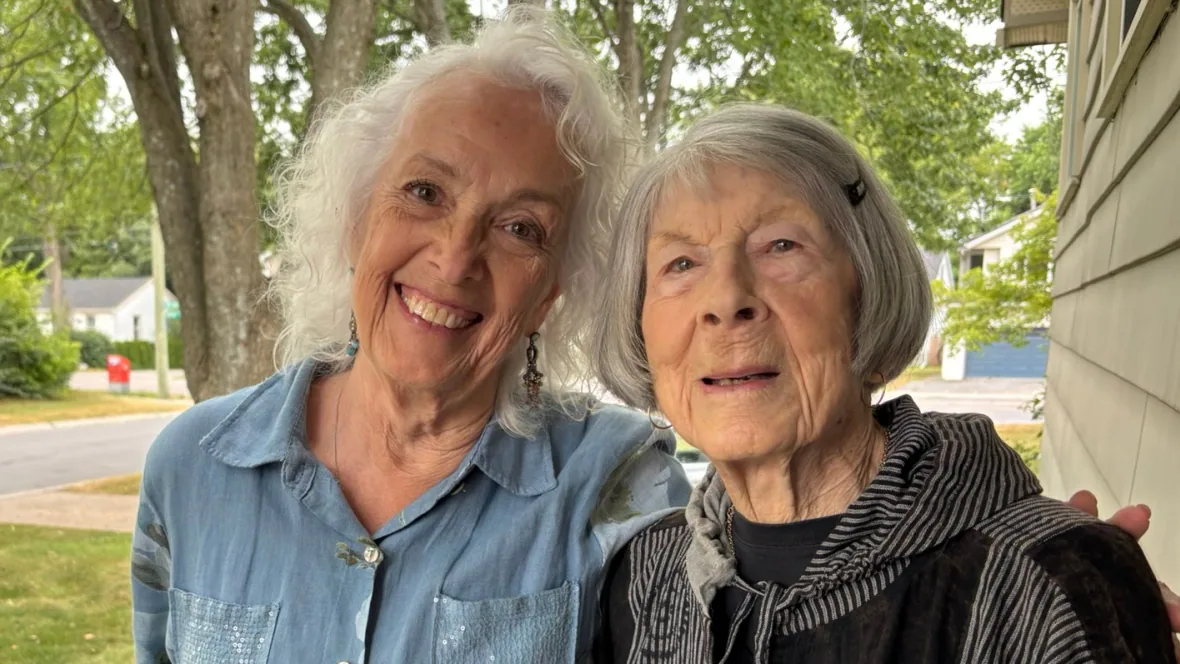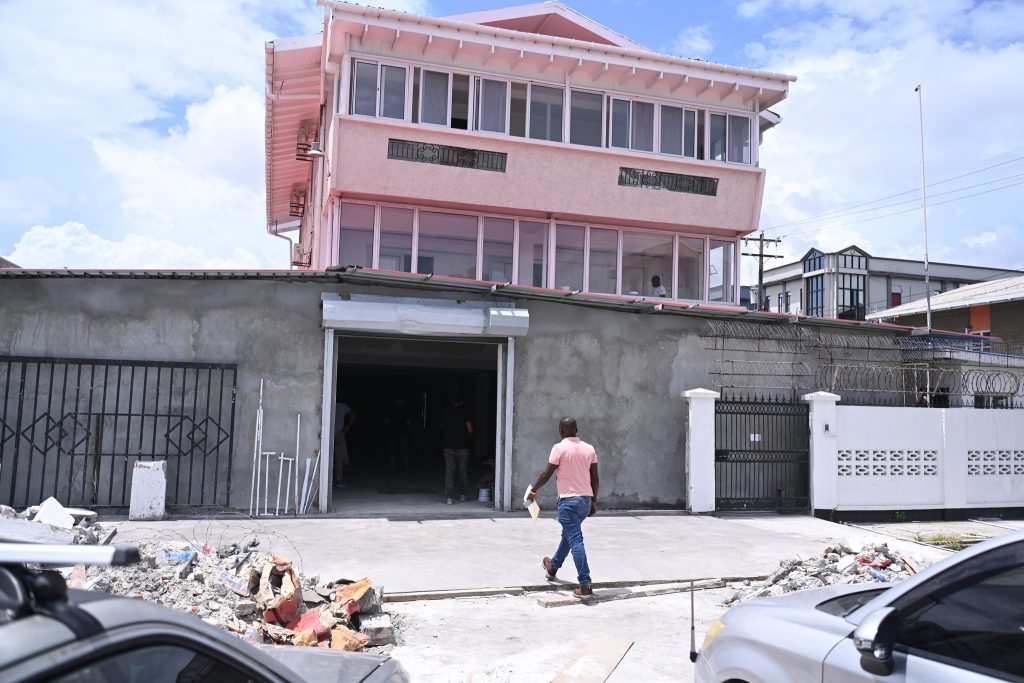Copyright thespinoff

From Japan to Pukepoto, Ngaroma Riley carves stories of whakapapa, play and resistance into the form of karetao. All photos by Chevron Hassett. Based in Tāmaki but with deep ties to Pukepoto in Te Hiku o Te Ika, Ngaroma Riley is part of a new generation of wāhine pushing carving into fresh territory. Her journey has taken her from learning relief techniques in Japan to embracing whakairo formally at Te Wānanga o Aotearoa, where questions of whakapapa, storytelling,and playfulness shape her evolving style. Kia ora Ngaroma, can you introduce yourself, your whakapapa and where you’re based? I’m based in Tāmaki but whakapapa to a small town near Kaitāia called Pukepoto (Te Rarawa and Te Aupōuri). How did your time in Japan influence your approach to carving and creativity? Japan provided an entry point into carving for me. I learnt how to carve low to mid relief forms using small paring chisels as well as Buddhist statues carved in the round. There are many traditional and contemporary examples of wood carving in Japan, including polychrome sculpture. I’m not sure how it has influenced me exactly but being exposed to it has given me more options for how I’d like my work to look. What inspired your return to Aotearoa and the pursuit of whakairo formally at Te Wānanga o Aotearoa? It was time to return home so that my children would be able to learn to walk in both worlds with ease. I’d heard about Te Wānanga o Aotearoa through an Ainu friend (indigenous Japanese) and when I checked the website I saw that they offered whakairo as a course. I rang to see if they accepted women and was happy to discover that they did. It was a one-year course which was interrupted by Covid-19 lockdowns but it was my first time learning in a Māori led institution, which I loved. How would you describe your artistic style and approach? I generally have a story that I want to tell, then I think about the form. Lately, I’ve been experimenting with more dynamic poses which really stretches my ability because I have no idea of anatomy and my carving skills are still very minimal. Somehow, I manage to muddle through. Can you walk us through your process when starting a new piece? I have an idea, then I think about how I want to represent that idea. I do some rough sketches and often throw my ideas around with my family. They are brutally honest and come back at me with questions or give me negative or positive responses. Because they understand me and my work well, if they can’t comprehend my idea, it means I have to rework it. It helps me to digest potential responses and reevaluate my ideas. How do you balance traditional whakairo methods with contemporary approaches in your work? I base all my figurative sculptures on the tekoteko form and go from there. The Pukepoto lintel, otherwise known as Tangonge (after the lake where it was found), is one of the oldest Māori carvings in existence. It was found close to where my Tupu (grandfather) grew up. It’s hugely significant to those who whakapapa to the area and I reference it as a great example of three dimensional sculpture with an emphasis on the form, not surface patterns. I like to think that my carvings also follow in that tradition. What drew you to start making karetao in your practice? I had been wanting to carve since I was a teen but couldn’t find anywhere that would allow women to carve. Japan opened that pathway up to me. When I came home in 2020 I was happy to find that there were carvers willing to teach wāhine Māori, but then there was also the uncertainty of having restrictions placed on what I could and couldn’t carve. Karetao from the whare tapere are noa and so I decided it would be a safe place for me to start and not offend anyone. Aside from that, I love the playfulness of karetao. Māori are inherently playful – we love to laugh, sing, entertain and get one another’s back up. How do karetao allow you to explore storytelling, identity or whakapapa? The karetao I’ve made so far have all been self portraits, so they are stories about the myriad of roles I play as a Māori, Pākehā, mother and artist. How does community and whānau inform your own practice? My whānau stories are very important to me and I am still learning about both my Māori and Pākehā heritage. I often allude to whakapapa stories in my work in the hope that it will keep the kōrero alive and use them as a mechanism for other members of my whānau whānui to learn about us – it’s especially important for us urban Māori who are far from our papa kāinga. You recently completed a residency with Papatūnga and currently have another with Te Tuhi Art Gallery in Pakuranga, Auckland. How do these opportunities support your practice? The residency at Te Tuhi with Papatūnga was my first time being in an actual studio. It allowed me to stretch out and really focus on making. Until then, all my making had been in the garage or at the kitchen table. I hope every artist has this opportunity at least once in a lifetime. Right now, I’m the ahi kā at Te Ana o Hine – a new studio at Te Tuhi which director Hiraani Himona has advocated for. I feel incredibly fortunate to not only to have the space to create, but also the support of my fellow wahine carvers, Hiraani and the awesome team at Te Tuhi. Their encouragement has helped me push past fear in my carving practice, and it’s opened the door to some exciting – and slightly terrifying – creative leaps. You’ve shown your work in, public space, galleries, and most recently the Aotearoa Art Fair. How do you see your practice shifting between these spaces? It doesn’t really affect the content of my work, but it does inspire me to embrace challenges, upskill and be innovative with new ideas. I’ve found myself in some uncomfortable spaces where I haven’t always felt fully prepared. Sometimes, depending on the audience or who I’m working with, there’s a certain amount of code switching. I’m proud to express Māori narratives through my work, but in today’s political climate, where anti-Māori sentiment is increasingly visible, it can feel unsettling. Looking back, are there works or moments that have been turning points in your practice? Having the opportunity to work with whānau on a public installation in Kaitāia was hugely meaningful for me. I was able to connect with family at the papakāinga and learn about the local history of the place that my grandfather grew up in. I hope I made my whānau proud with the contribution that I made. To date, this is also the largest work I’ve made. What are your aspirations for the next few years? Being a maker in the art world is very new to me, so I’m still learning to navigate it. I’m currently working on an installation for the New Commissions exhibition opening at Artspace Aotearoa on October 18. I have a few art goals which were nothing but pipe dreams a few years back but I’ve slowly been ticking some of them off. I’m keen to continue to grow networks and carving opportunities for indigenous wahine carvers. Giving visibility to the wāhine currently carving is important for those who have been told they are not allowed to. Going forward, I’d also like to connect with indigenous women around the globe – it’s important not only to stand in solidarity with one another, but to help whakamana one another’s practice. I’ve been fortunate to have been mentored by some great women, indigenous and Pākehā, and I’d like to be able to do this for others. Favourite movie? That’s a hard one because it changes depending on my mood, but I love sci-fi. By contrast, I also love period dramas. Imagine that, a sci-fi period drama? If your karetao could speak, what would it say? What about a portrait of me as a…? Something in your studio you can’t live without? Probably my Superjaws portable clamp. Dream collaboration? I did a dream collaboration with renowned painter Emily Karaka last year. She provided the idea for the work. I carved them and she painted them. Emily is a colourist who understands and is bold with paint. The outcome was completely unexpected and I had so much fun working with her.



